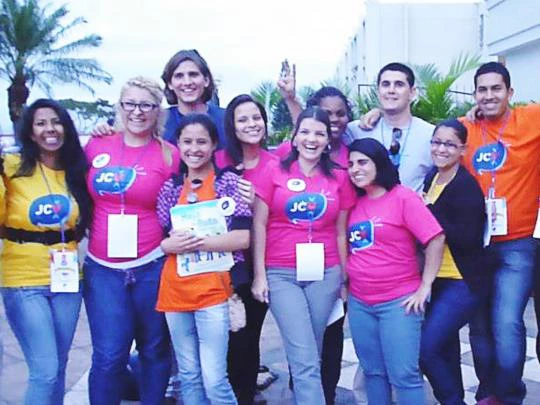
"I became tired of loosing my friends to violent acts involving firearms, and seeing how the young the potential of my generation is lost in prisons and cemeteries." These are the words of Angel Bolivar Araya Castillo, the Coordinator of Youth Against Violence (YAV) Movement in Costa Rica. I had the privilege of meeting Angel this spring when he and six youth representatives from the YAV movement came to the World Bank to talk about the importance of youth participation in violence prevention.
The YAV movement that Angel is part of, is a youth-led regional initiative that has the mission to promote safety in Central America by raising awareness, mobilizing communities and advocating for national and regional policy change. YAV is particularly interesting because it was created by youth who grew tired of being framed as victims and perpetrators of violence and instead took it upon themselves to explore solutions to the issue.
“As a teacher, asking kids what they wanted to be when they grew up, I was shocked many of them responded they wanted to be gang members or hit men. I knew I had to do something” says Aleyda Guadalupe Méndez Gálvez, when asked about her motivation to join the YAV movement. Although these words are Aleyda’s they could be the words of many other youth in the Central America Region, where youth encompass the vast majority of victims and perpetrators of crime.
At one extreme, where homicide rates are high and firearms and organized crime in the form of drug trafficking play a substantial role, 1 in 50 men will be murdered before they reach the age of 31. (UNODC, 2011) Yet within the tragedy of this reality lies an opportunity. Because youth experience violence so closely, they have unique motivation and vision that can inform violence prevention programming.
The YAV movement for example, today has chapters in all seven Central American countries and over 200 active members; they have also been invited to present their policy recommendations at the Central America Region Presidential Forum - many of which were adopted at the local, national and regional levels.
Initiatives like YAV remind us how little we are doing to empower youth voices and how much more could be achieved if youth become involved in dialogues relevant to them. In Aleyda’s words: "young people should not be thought about as the 'future', we are the present and in the present - with perseverance and compromise - we can promote the prevention of violence".
The Importance of Youth Engagement
Youth are those closest and most affected by the violence, yet whenever we think of Violence Prevention people often think of police, guns, and jails. Not enough people think about youth. The reality is that youth are rarely engaged in identifying solutions, and too often decisions on the Youth Violence Prevention agenda are taken about the youth, rather than with and for them.
It is important we recognize that youth are not only perpetrators and victims of crime; but that they can also be active mobilizers, thinkers and policy advocates for its prevention. However, to do this seriously youth must be given the space and opportunity to have an active role - not as observers – but as active contributors and shapers of policy.
Simply inviting youth to the table is not enough and quantity of participating youth does not necessarily imply quality participation. High quality youth participation entails a process of involving youth in taking the decisions that affect their lives. This could take many different forms (committees, groups, meetings, etc) but it must involve active youth participation. It is a common mistake to conclude that because a number of youth activities occur, and because a number of young people take part in them, participation is taking place. (Checkoway, 1994).
International organizations, national and local governments are all ideally positioned to help empower these youth by providing space where youth can engage imeaningully. Youth agency is not an option if we are to consider the Youth Violence Prevention Agenda seriously. There is much that practitioners, academics and policy makers can learn from youth. We just need to remember to listen.
* You can learn more about the Youth Against Violence Central America Movement at the regional and country websites below:
- Website: https://www.facebook.com/JCVCentroamerica?ref=ts&fref=ts
- https://www.facebook.com/pages/Jovenes-contra-la-Violencia-TV/199077006889759?fref=ts
- Belize https://www.facebook.com/YMAVBelize
- Guatelama https://www.facebook.com/JCVGuatemala?fref=ts
- El Salvador https://www.facebook.com/JCVELSALVADOR?fref=ts
- Honduras https://www.facebook.com/pages/Jovenes-contra-la-violencia-Honduras/103407179751006?fref=ts
- Nicaragua https://www.facebook.com/mjcv.ni?fref=ts
- Costa Rica https://www.facebook.com/jovenescontralaviolenciacr?fref=ts
- Panamá https://www.facebook.com/pages/J%C3%B3venes-Contra-la-Violencia-Panam%C3%A1/176618342440142?fref=ts


Join the Conversation